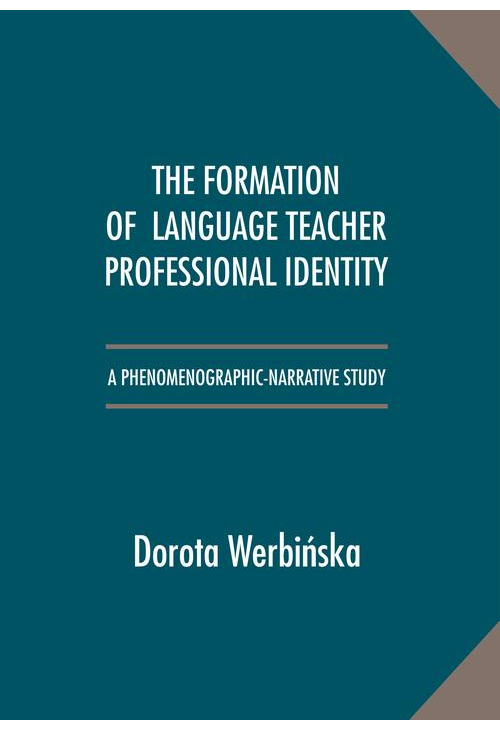
- -11%
ebook The Formation of Language Teacher Professional Identity A Phenomenographic–Narrative Study
Wyjątkowe spojrzenie na formowanie tożsamości zawodowej nauczycieli języka obcego - The Formation of Language Teacher Professional Identity autorstwa Doroty Werbińskiej, wydane przez Uniwersytet Pomorski w Słupsku w 2017 roku. Publikacja ta, napisana w języku angielskim, stanowi niezwykłą okazję do zgłębienia tajników zawodu nauczyciela języka obcego.
Książka ta, dostępna również w formacie e-book, jest kluczem do zrozumienia, kim są nauczyciele i jakie wyzwania stoją przed nimi w sali lekcyjnej. Wersja elektroniczna tej cennej pozycji czeka na Ciebie w sklepie z ebookami, gdzie możesz łatwo pobrać ebook i rozpocząć przygodę z lekturą.
Odkryj najważniejsze aspekty formowania tożsamości zawodowej nauczycieli języka obcego, które pomogą Ci zrozumieć, jak wyjątkowym i złożonym zawodem jest praca w szkolnictwie. Ta publikacja cyfrowa, dostępna jako ebook do pobrania, jest idealnym narzędziem dla osób chcących pogłębić swoją wiedzę na temat roli nauczycieli języka obcego.
"The Formation of Language Teacher Professional Identity" to książki elektroniczne, które pomogą Ci spojrzeć na zawód z nowej perspektywy. Czytaj wygodnie w formacie PDF i ciesz się dostępem do wiedzy, która może zmienić Twoje podejście do nauczania języków obcych.
Wydanie elektroniczne tej pozycji to najlepsze ebooki, które powinny znaleźć się na półce każdego, kto interesuje się rozwojem zawodowym nauczycieli. Zanurz się w lekturze i odkryj sekrety tożsamości zawodowej nauczycieli języka obcego!
Spis treści ebooka The Formation of Language Teacher Professional Identity
INTRODUCTION 11CHAPTER ONE
Identity: Selected Conceptual Issues 18
Introduction 18
1.1 Theoretical Constructs of Identity 18
1.1.1 Essentialist Concepts of Identity 19
1.1.2 Poststructuralist Concepts of Identity 21
1.1.3 Narrative and Discursive Concepts of Identity 23
1.1.4 Identity Constructs – Summing up 26
1.2 Basic Identity Distinctions 27
1.2.1 Social Identity 27
1.2.2 Personal Identity 28
1.2.3 Professional Identity 28
1.2.3.1 Marcia’s Statuses of Identity and Professional Identity 29
1.2.3.2 Moral Development and Professional Identity 31
1.3 Current Conceptualizations of Identity 32
1.3.1 Wenger’s (1998) Communities of Practice 33
1.3.2 Gee’s (2001) Identities 34
1.3.3 Varghese et al.’s (2005) Views on Identity 36
1.3.4 Clarke’s (2009) Diagram for Identity Work 36
1.3.5 Benson et al.’s (2013) Facets of Identity 38
1.3.6 Pennington’s (2015) Frames of Teacher Identity 38
1.3.7 Trent’s (2015) Framework 39
1.3.8 Pulling it Together: A Diagram for Three-A Teacher Identity Framework (3ATIF) 40
1.4 Conclusion of Chapter One 43
CHAPTER TWO
Language Teacher Identity Framework: A Theoretical Perspective 44
Introduction 44
2.1 The Construction of Professional Identity 45
2.2 Language Teacher Affiliation 46
2.2.1 Teacher Professionalism 47
2.2.2 Ethicality 49
2.2.3 Proximity and Positioning 50
2.2.4 Imagined Communities 53
2.2.5 Globality and Locality 54
2.2.6 Investment 55
2.2.7 Language Teacher Affiliation – Summing up 56
2.3 Language Teacher Attachment 57
2.3.1 Language Teaching Practice 58
2.3.2 Traditional vs. Constructivist Teaching 61
2.3.3 Language Teacher Attachment – Summing up 62
2.4 Language Teacher Autonomy 63
2.4.1 Teacher Agency 64
2.4.2 Teacher Reflection 66
2.4.3 Teacher Resilience 68
2.4.4 Language Teacher Autonomy – Summing up 69
2.5 Affiliation-Attachment-Autonomy – Summing up 70
2.6 Other Theoretical Concepts 72
2.6.1 Continuities 72
2.6.2 Discontinuities 73
2.7 Approaches to Language Teacher Change 74
2.7.1 Norton’s Identity Approach 74
2.7.2 Possible-Selves Theory 76
2.7.3 Pulling it Together: A Diagram for Three-A Language Teacher Identity Framework (3ALTIF) 78
2.8 Conclusion of Chapter Two 78
CHAPTER THREE
Research on Language Teacher Identity: A Review 81
Introduction 81
3.1 Investigating Identity 82
3.1.1 Conversation Analysis 82
3.1.2 Critical Discourse Analysis 84
3.1.3 Narrative Analysis 85
3.2 Research on Teacher Professional Identity 86
3.2.1 North American Studies 87
3.2.2 European Studies 88
3.2.3 Australasia 93
3.2.4 The Far East 94
3.2.5 Israel 94
3.2.6 South Africa 94
3.2.7 Summary of General Education Teacher Identity Research 95
3.3 Research on Language Teacher Professional Identity 95
3.3.1 Language Teacher Identity: Focus on Identity Formation (Group One) 96
3.3.2 Language Teacher Identity: Focus on Teacher Affiliation (Group Two) 105
3.3.3 Language Teacher Identity: Focus on Teacher Attachment (Group Three) 116
3.3.4 Language Teacher Identity: Focus on Teacher Autonomy (Group Four) 122
3.3.5 Research on Teacher Identity in Poland 129
3.4 Conclusion of Chapter Three 132
CHAPTER FOUR
Empirical Research on Language Teacher Professional Identity: Methodology 133
Introduction 133
4.1 Statement of Purpose 133
4.2 Methodological Focus 134
4.2.1 Phenomenographic Perspective 136
4.2.2 Narrative Perspective 138
4.3 Context and Participants 141
4.4 Design of the Study 142
4.4.1 Stage One 143
4.4.2 Stage Two 143
4.4.3 Stage Three 144
4.4.4 Stage Four 145
4.4.5 Four Teachers’ Trajectories 146
4.5 Data Collection 146
4.6 Data Analysis 154
4.6.1 General Information 154
4.6.2 Creating Phenomenographic Maps 156
4.6.3 Restorying 159
4.6.4 Working with Metaphors 159
4.7 Researcher’s Position 160
4.8 Characteristics of the Study 162
4.8.1 Validity and Credibility 162
4.8.2 Reliability and Dependability 164
4.8.3 Generalizability and Transferability 165
4.9 Methodological and Ethical Challenges 165
4.9.1 Methodological Challenges 166
4.9.2 Ethical Dilemmas 167
4.10 Conclusion of Chapter Four 169
CHAPTER FIVE
Empirical Research on Language Teacher Professional Identity: A Phenomenographic Study 171
Introduction 171
5.1 Stage One: Aims and Context 171
5.1.1 Preliminary Study 172
5.1.1.1 Procedure 173
5.1.1.2 Findings 173
5.1.2 Affiliation-Shaped Identity 179
5.1.2.1 Procedure 180
5.1.2.2 Findings 181
5.1.3 Attachment-Shaped Identity 200
5.1.3.1 Procedure 200
5.1.3.2 Findings 201
5.1.4 Autonomy-Shaped Identity 223
5.1.4.1 Procedure 223
5.1.4.2 Findings 223
5.2 Stage Two: Aims and Context 230
5.2.1 Affiliation-Shaped Identity 231
5.2.1.1 Procedure 231
5.2.1.2 Findings 232
5.2.2 Attachment-Shaped Identity 247
5.2.2.1 Procedure 248
5.2.2.2 Findings 248
5.2.3 Autonomy-Based Identity 270
5.2.3.1 Procedure 270
5.2.3.2 Findings 270
5.3 Stage Three: Aims and Context 284
5.3.1 Procedure 285
5.3.2 Affiliation-Shaped Identity 286
5.3.3 Attachment-Shaped Identity 310
5.3.4 Autonomy-Shaped Identity 319
5.4 Stage Four: Aims and Context 329
5.4.1 Procedure 330
5.4.2 Affiliation-Shaped Identity 331
5.4.3 Attachment-Shaped Identity 349
5.4.4 Autonomy-Shaped Identity 356
5.5 Discussion 364
5.6 Conclusion of Chapter Five 390
CHAPTER SIX
Empirical Research on Language Teacher Identity: Four Narrative Studies 391
Introduction 391
6.1 Aims 391
6.2 Participants 392
6.3 Data Collection 395
6.4 Data Analysis 395
6.5 Narrative Stories 397
6.5.1 Vera’s Story (She intended to become a language teacher and works as one) 397
6.5.2 Peter’s Story (He intended to become a language teacher but doesn’t work as one now) 408
6.5.3 Iza’s Story (She did not intend to become a language teacher but now works as one) 420
6.5.4 Jacob’s story (He did not intend to become a language teacher and doesn’t work as one) 427
6.6 Discussion 434
6.7 Conclusion of Chapter Six 442
Conclusions, Limitations, Implications, and Further Research 444
REFERENCES 453
APPENDICES 484
Appendix A 484
Appendix B 485
Appendix C 486
Appendix D 508
Appendix E 509
Appendix F 510
Appendix G 511
Appendix H 511
List of Figures
Figure 1-1: The creation of Teacher Identity Framework (3ATIF) 41
Figure 2-1: Language teacher affiliation subdomains 56
Figure 2-2: Language teacher attachment subdomains 63
Figure 2-3: Language teacher autonomy subdomains 69
Figure 2-4: The Three A Language Teacher Identity Framework (3ALTIF) 79
Figure 5-1: WTTFL statements and language teacher metaphors (Stage One) 182
Figure 5-2: WTTFL statements and language teacher metaphors (Stage Two) 233
Figure 5-3: WTTFL statements and language teacher metaphors (Stage Three) 287
Figure 5-4: WTTFL statements and language teacher metaphors (Stage Four) 332
Figure 5-5: Continuities and discontinuities-shaped 3ALTIF (Stage One) 367
Figure 5-6: Continuities and discontinuities-shaped 3ALTIF (Stage Two) 373
Figure 5-7: Continuities and discontinuities-shaped 3ALTIF (Stage Three) 379
Figure 5-8: Continuities and discontinuities-shaped 3ALTIF (Stage Four) 384
List of Tables
Table 3.1: Overview of language teacher professional identity studies with a focus on teacher formation 98
Table 3.2: Overview of language teacher professional identity studies with a focus on teacher affiliation 106
Table 3.3: Overview of language teacher professional identity studies with a focus on teacher attachment 117
Table 3.4: Overview of language teacher professional identity studies with a focus on teacher autonomy 123
Table 4.1: Groups, stages of the study and the number of participants 141
Table 4.2: The employment of research instruments 147
Table 4.3: Excerpt of data transcription 155
Table 5.1: Ways of understanding language studies with a teaching profile 174
Table 5.2: Metaphors-derived images of teachers (Stage One) 184
Table 5.3: Affiliation-shaped identity (Stage One) 188
Table 5.4: Attachment-shaped identity (Stage One) 202
Table 5.5: Autonomy-shaped identity (Stage One) 224
Table 5.6: Metaphors-derived images of teachers (Stage Two) 234
Table 5.7: Affiliation-shaped identity (Stage Two) 238
Table 5.8: Attachment-shaped identity (Stage Two) 249
Table 5.9: Autonomy-shaped identity (Stage Two) 271
Table 5.10: Metaphors-derived images of teachers (Stage Three) 288
Table 5.11: Affiliation-shaped identity (Stage Three) 293
Table 5.12: Attachment-shaped identity (Stage Three) 311
Table 5.13: Autonomy-shaped identity (Stage Three) 319
Table 5.14: Information about participants and data collection in Stage Four 330
Table 5.15: Affiliation-shaped identity (Stage Four) 334
Table 5.16: Attachment-shaped identity (Stage Four) 349
Table 5.17: Autonomy-shaped identity (Stage Four) 356
Table 6.1: Case study participants 394
Table 6.2: Data collection instruments for constructing the participants’ stories 395
Szczegóły ebooka The Formation of Language Teacher Professional Identity
- Wydawca:
- Uniwersytet Pomorski w Słupsku
- Rok wydania:
- 2017
- Typ publikacji:
- Ebook
- Język:
- angielski
- Format:
- Liczba stron:
- 530
- Miejsce wydania:
- Słupsk
- ISBN dla wersji papierowej:
- 9788374672740
Recenzje ebooka The Formation of Language Teacher Professional Identity
-
Reviews (0)

Na jakich urządzeniach mogę czytać ebooki?
- -11%




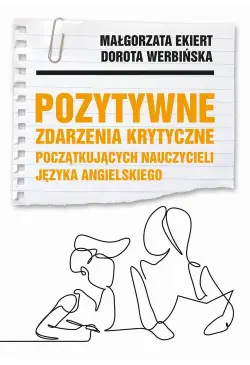


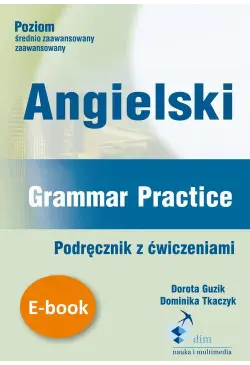
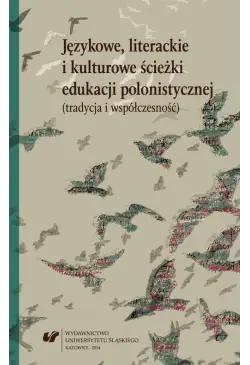
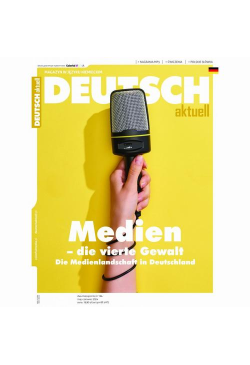
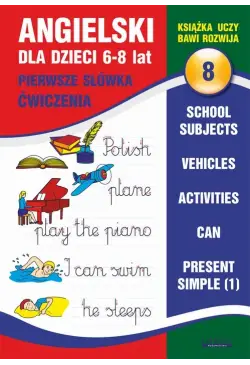


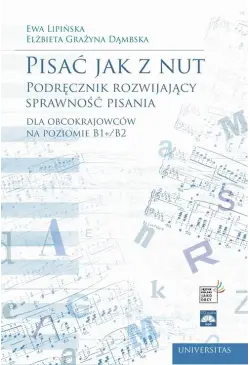



@CUSTOMER_NAME@
@COMMENT_TITLE@
@COMMENT_COMMENT@